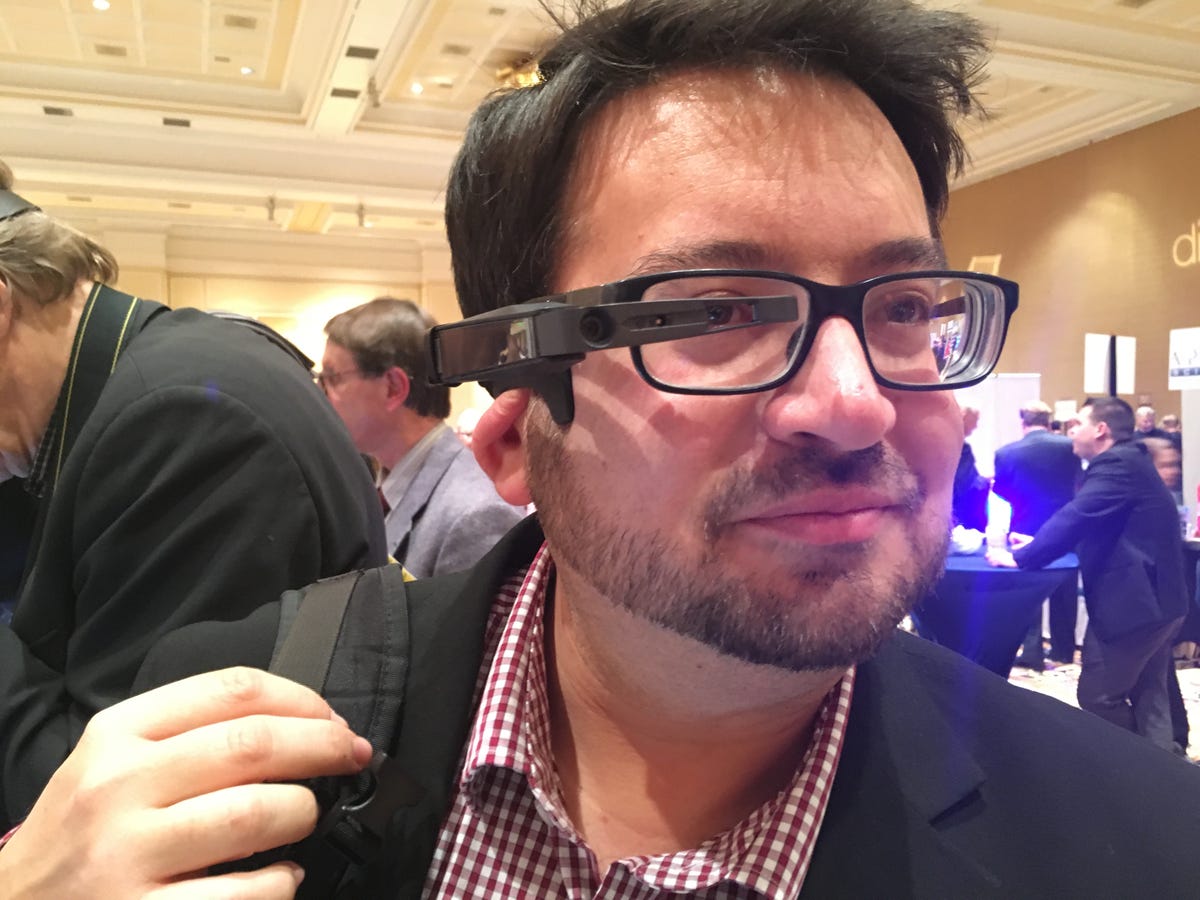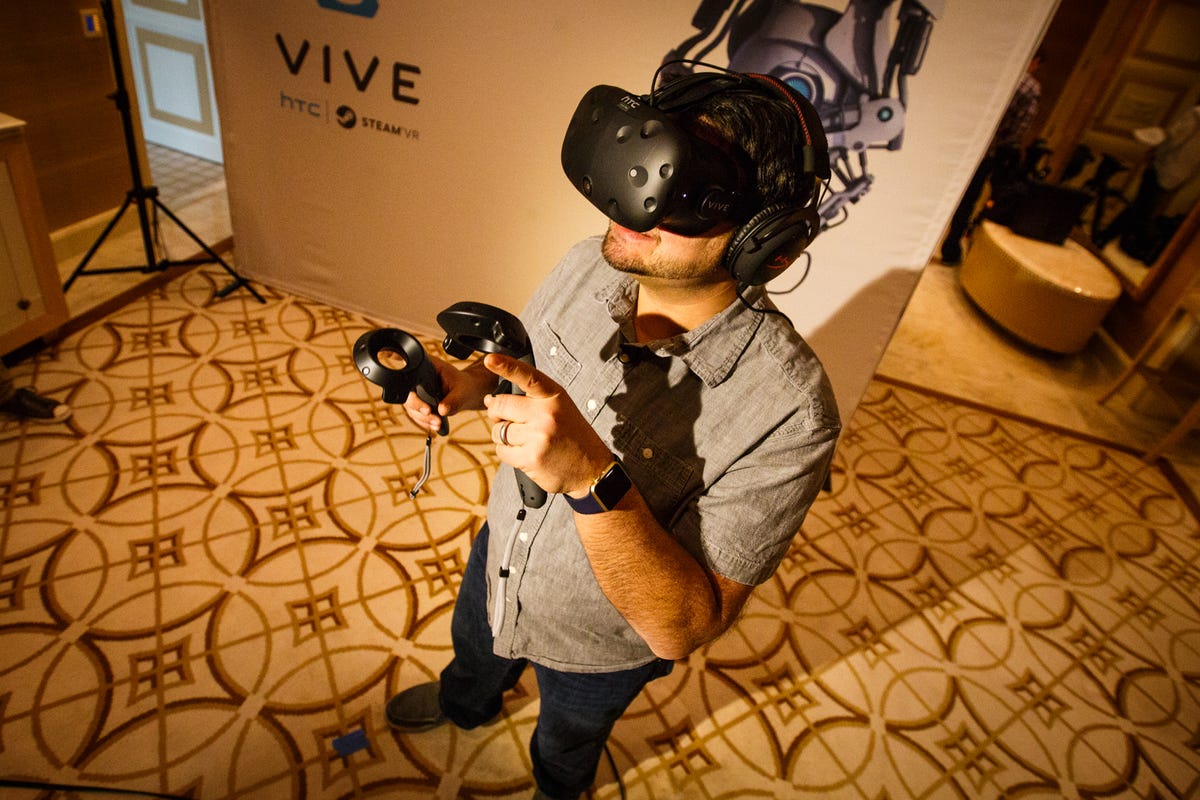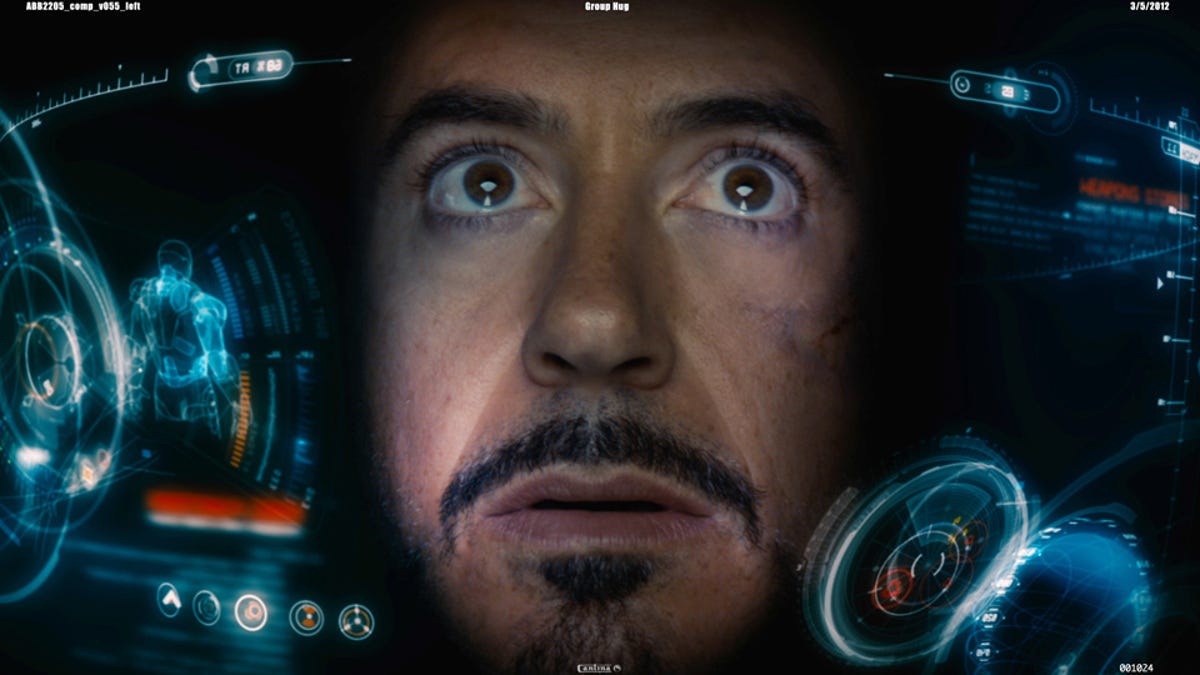Putting ridiculous things on my face has become a fun tech-show pastime of mine. But there’s no way I’d ever have these things in my everyday life.
Weird, overly large sunglasses with an eyepiece floating off the side. Tremendous mirror shades. Every set of VR goggles. Most of the tech I put on my face looks absurd. I can’t go around wearing it. And if I can’t, then you sure as hell won’t.
That doesn’t seem to be stopping the aspirations of the smartglass industry.
Google Glass — the first pair of “smartglasses” that tried to go mainstream — feels like it debuted 15 years ago (it was actually just 2013). Since then, few people are talking, anymore, about everyday people wearing smartglasses, or putting displays over your face in the real world (unless we’re talking about VR headsets, that is). Instead, most companies I’ve met over the past year or so seemed satisfied with finding a purpose elsewhere.


Now playing:
Watch this:
Intel plans to make construction helmets safer
2:03
In “enterprise” — businesses or workplaces where having access to heads-up data in your eyeline might actually be useful, like the Intel Daqri smart helmet (or even, Microsoft HoloLens). Or, sports: heads-up displays used while biking, like Recon’s Jet glasses, or the Skully AR-1 helmet.
There are a lot of companies still living the dream. In Las Vegas a few weeks ago, I saw a small flood of them.
I just know that there’s no way I’d ever want any of these in my life…unless they looked nicer, or did something truly amazing. And even then, I have my doubts.


Telepathy’s clip-on eyepiece concept that fits over regular glasses.
Scott Stein/CNET
Smartglasses bank on tech that still doesn’t feel ready yet
What are smartglasses? They’re really just about any headset that tries to show images in front of your eyes: 2D, 3D, holographic in appearance or just a flat floating dashboard. The optical technology in each varies.
Smartglasses dabble in augmented reality: layering information alongside the things you see all the time. Augmented reality is hard to pull off. Balancing real-world vision with projected information means you’re suddenly letting what your glasses are showing compete with everything else in the world.
If you want to call Microsoft HoloLens a pair of smartglasses — which would be a bit of a stretch — they’re the most impressive smartglasses I’ve ever tried. But the battery life and real-world utility of HoloLens is still a mystery, too. It’s a giant visor that slides over my head and shows me floating, holographic images that I can interact with. But I’ve only used it in fixed environments at controlled Microsoft showcases.
Consider this: smartwatches are messy, imperfect toys that aren’t for most people. But they’re polished jewels next to the mess that’s currently the smartglasses landscape.


HTC Vive Pre: Yes, it’s amazing.
Josh Miller/CNET
People talk about VR because it’s a mind-blowing experience
Virtual reality headsets don’t look cool. They’re ugly as hell. But most VR experiences, from Samsung Gear VR to the HTC Vive, do things that make people’s jaws drop. VR is a stunning thing to behold. It’s so amazing, ordinary people start wondering whether they’d be able to justify an awkward pair of goggles into their budgets and lives.
Using Google Glass was a terrible experience. Nothing about Google Glass was impressive to try first-hand. The best part of Google Glass was what it appeared to look like: a headset that did magical things. It didn’t do those magical things. It was a weird, slow screen in your eye.


Now playing:
Watch this:
Carl Zeiss Optics made a pair of smart glass frames that…
1:08
Good-looking smartglasses don’t exist…yet
I haven’t seen any smartglasses I’d want to wear. Every pair I’ve tried has been ugly, or cumbersome, or crazily bulky. And most of these smartglasses don’t do anything nearly as useful or cool as virtual reality. So, why would I even want to wear them?
Case in point: ODG has a pair of glasses that project 2D and 3D images onto its lenses, but uses a swappable set of magnetic lens shields: opaque for more VR-like content, or transparent for AR (augmented reality). Intriguing tech, but weird execution. Even if you’d be curious to try them, you’ll probably never buy one: a pair costs $2,750 (that works out to about £1,925 or AU$3,926, converted). This makes even a $599 VR kit (around £420 or AU$850) seem pretty reasonable.
Some companies are still waiting on a future that hasn’t gotten here yet. Carl Zeiss Smart Optics is developing future smartglass frames using traditional glasses-making techniques. The frames I tried were 3D-printed prototypes, but had lenses made of polycarbonate, carved out to allow a microprojector on the side. The design of the lens will create a space for the display to hover, all while looking more like a regular pair of glasses. But Carl Zeiss Smart Optics isn’t making any electronics — this is all a feat of basic material construction.


Now playing:
Watch this:
Recon’s Jet fitness glasses show your stats while you…
0:42
The only time smartglasses seem to make sense is for cycling or hands-free sports use. Recon’s glasses have a readout inside, meant for looking at basic stats like distance or pace.
Skully’s AR-1 motorcycle helmet does something similar — it’s a HUD for your rides.
I get it; these are like smart dashboards for your face. But is that even a good idea, when you’re riding a bike at high speeds?
Optics, prescriptions and durability
I haven’t even addressed a little thing called prescription vision. I’m a -9 prescription, heavily nearsighted. Finding smartglasses and VR goggles that work for me is a headache. I had to get prescription contacts to wear Google Glass. Some VR headsets work without glasses, and don’t focus enough for my poor vision. Others fit over my glasses — some better than others. Many leave imprints on my face, or press in on my glasses so much I worry they’ll break.
Eyes are sensitive things. We want something on our eyes that works well, protects us, and feels comfortable. Other than Google Glass’ budding partnership with eyewear maker Luxottica (which could end up as part of Google Glass 2.0 later this year) and the nonworking Carl Zeiss Smart Optics frames I tried, I haven’t seen a lot of progress on that front. It’s a victory when a pair of smartglasses doesn’t make me feel nauseous or hurt my face.
Heavier hitters in design and construction are bound to come later on, when the tech is improved. Will Apple ever craft a pair of designer smartglasses? Maybe, but not until the whole concept has been far more settled down.
The real killer smartglass: AR plus VR
I know my dream future product: a pair of regular glasses that can effortlessly slip from virtual reality to augmented reality by adjusting the lens opacity. Lots of industry leaders see AR and VR merging…but it might not be anytime soon. VR headsets would need to get far more compact, and AR technology needs to advance to levels that currently don’t exist. And that’s not even taking into account basic things like battery life and software compatibility, as well as comfort and fit.
I’d probably buy something like that, if it also acted as my everyday glasses. That’s a big if. And I didn’t have to charge it every four hours. Because I already have too many things to charge each day, and I don’t want to add a pair of glasses.


I want a seamless blend of VR and AR, in a design that looks great. Not happening right now.
Walt Disney Company
We’re not there yet…or anywhere close
This year might be largely about VR, but I’d bet we’ll see a fair number of smartglass announcements popping up, too.
Smartglasses simply don’t do the types of amazing things that augmented reality has promised for years. You won’t get magic floating avatars, or be able to easily scan faces and signs to tell you about where you are and where you need to go. Technology like the long-rumored but still-unseen Magic Leap might deliver that, someday. I’ve never tried Magic Leap, but I can say that I’ve never been wowed by a pair of smartglasses.
Maybe we’re not far enough along in battery technology, or hardware design. Maybe app developers need to understand VR first before creating useful smartglass software. But, I wouldn’t want to experience any of the smartglasses I’ve briefly looked at ever again. I wouldn’t want to wear any of them, either.
Those are two pretty large hurdles, in my opinion. I don’t know how many years it’ll truly take until they’ll really be fully addressed.



